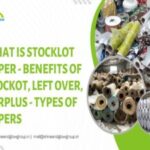

Artificial leather also referred to as synthetic leather, is a fabric designed to imitate the appearance and texture of genuine leather. It is a substitute for leather in various applications such as upholstery, clothing, footwear, and more when using genuine leather is either impractical due to cost or unsuitable for specific purposes. Moreover, artificial leather is commonly known by several names, including leatherette, imitation leather, faux leather, vegan leather, PU leather (polyurethane), and pleather.
What is Faux Leather? A Closer Look at Synthetic Leather
Faux leather, also known as PU leather, is a synthetic material that is made to look and feel like real leather. It offers a more affordable alternative to genuine leather, while still providing a similar aesthetic appeal. In this article, we will explore the world of faux leather, its construction, uses, and the different types available in the market.
Faux leather, or artificial leather, is a synthetic material that imitates the look and feel of genuine leather. It is often used as a more affordable and sustainable alternative to real leather, making it popular in various industries such as fashion, upholstery, and furniture.
The Construction of Faux Leather
Faux leather is primarily constructed using two different materials: Polyvinyl Chloride (PVC) and Polyurethane (PU). These materials are applied to a fabric backing to create the final product.
- Polyvinyl Chloride (PVC): PVC-based faux leather consists of a PVC film that is applied to a fabric backing. It is less common than PU leather but offers increased durability and a longer lifespan.
- Polyurethane (PU): PU-based faux leather is made by applying a polyurethane film to a fabric backing. This type of faux leather is the most common in the market due to its versatility and affordability.

Uses of Faux Leather
Faux leather finds its application in a wide range of products such as clothing, furniture, and upholstery. It is often used to create leather-like garments, including jackets, pants, skirts, and accessories. In the interior design industry, faux leather is utilized for sofas, chairs, and other upholstery needs. Its versatility and cost-effectiveness make it a popular choice for both manufacturers and consumers.
Faux Leather Jackets: A Stylish Alternative
Faux leather jackets have gained immense popularity as a fashionable alternative to genuine leather jackets. These jackets are made using synthetic materials that are treated with chemicals to achieve the desired texture, color, and feel of real leather. They come in various styles and designs, catering to both men and women.
One advantage of faux leather jackets is their uniform pattern, which gives them a distinct look. Additionally, they offer better resistance to water compared to genuine leather jackets. However, it’s important to note that faux leather jackets may not be as durable as their genuine counterparts.
Types of Faux Leather


| Feature | PU Leather | PVC Leather |
|---|---|---|
| Material | Polyurethane | Polyvinyl chloride |
| Durability | Good | Excellent |
| Breathability | Breathable | Not breathable |
| Affordability | Affordable | More expensive |
| Applications | Furniture, clothing, accessories | Upholstery, footwear, luggage |
| Pros | Good balance of affordability and durability, breathable, comfortable to wear | Durable, long-lasting, water-resistant, easy to clean |
| Cons | Not as durable as PVC, can be prone to cracking | Not breathable, can be stiff and uncomfortable, may contain harmful chemicals |
Artificial leather has different names
Artificial leather is marketed under many names, including “leatherette”, “faux leather”, “vegan leather”, “PU leather” and “pleather”. Artificial leather is processed with chemicals depending on desired properties and end-use applications.
| Name | Description |
|---|---|
| Leatherette | A term used to describe artificial leather |
| Faux Leather | Synthetic material made to resemble real leather |
| Vegan Leather | Animal-friendly alternative to traditional leather |
| PU Leather | Polyurethane-coated fabric imitating real leather |
| Pleather | Blend of plastic and leather, often used for cost-effective alternatives |
How is Artificial Leather Manufactured?

| Step | Description |
|---|---|
| 1 | Prepare casting paper: Emboss desired surface finish onto the casting paper. |
| 2 | Apply plastic layers: Coat the casting paper with multiple layers of plastic materials like PVC or polyurethane. |
| 3 | Cure artificial leather: Solidify the layers and achieve desired properties by curing the artificial leather. |
| 4 | Remove release paper: After curing, remove the release paper. |
| 5 | Reuse release paper: The release paper can be reused for future production. |
| 6 | Research on collagen production: Ongoing exploration of fermentation-based techniques to produce collagen, which is the primary component of genuine leather. |
Uses
| Uses | Description |
|---|---|
| Clothing fabrics | Artificial leathers are commonly used in clothing for their aesthetic appeal and comfort. |
| Furniture upholstery | They are widely utilized for upholstery purposes in furniture, offering durability and style. |
| Watercraft upholstery | Artificial leathers find application in watercraft upholstery due to their water-resistant properties. |
| Automotive interiors | They are extensively used in automotive interiors as a substitute for genuine leather. |
| Porous and breathable | Depending on the construction, artificial leathers can be porous and breathable, making them comfortable to wear. |
| Impermeable and waterproof | Some artificial leathers are impermeable and waterproof, providing resistance to liquids and stains. |
| Low maintenance | Artificial leathers require less maintenance compared to genuine leather, making them a convenient choice for various applications. |
| Crack and fade resistance | They have the advantage of being less prone to cracking or fading, providing long-lasting aesthetics. |
| Potential surface wear | While artificial leathers are durable, the surface of some variants may experience rubbing and wear over time. |
Conclusion
cost-effective and sustainable alternative to genuine leather. With its construction using materials like PVC and PU, it successfully imitates the appearance and texture of real leather. Faux leather is widely used in the fashion and upholstery industries, with faux leather jackets being a popular choice for style-conscious individuals. By understanding the different types of faux leather, consumers can make informed choices based on their preferences and needs.
FAQs
No, faux leather is a synthetic material made to resemble genuine leather. While it offers a similar look and feel, it is not made from animal hides like real leather.
Compared to genuine leather, faux leather is considered more environmentally friendly. It reduces the demand for animal products and minimizes the environmental impact associated with the leather production process.
Yes, faux leather made from polyurethane (PU) can be recycled. However, the recycling process might vary depending on the specific composition of the material. It’s always best to check with local recycling facilities for guidance.
Faux leather is generally easier to care for compared to genuine leather. To clean it, wipe the surface with a damp cloth or use mild soap and water if needed. Avoid using harsh chemicals or abrasive materials that could damage the fabric.
Read Also: Artificial leather or Synthetic Leather, Rexine, Fake leather, imitation leather used, and prices
Artificial leather, also known as synthetic leather, faux leather, rexine, or imitation leathers, has gained popularity as a cost-effective and versatile substitute for genuine leathers. This article will provide a detailed overview of artificial leathers, including its manufacturing process, types, composition, and applications… Read More



